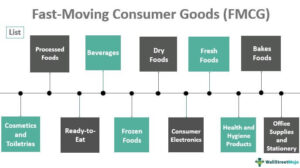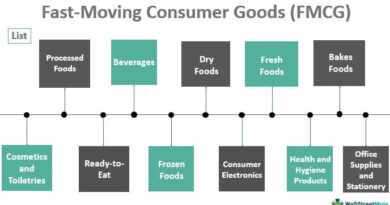Top and trusted modern sales method you can use in fmcg business today
What is Science-Based Selling?
POWERFUL SALES TECHNIQUES (Backed By Scientific Research)
What enables one salesperson to outsell another?
Why does one sales process produce superior results, while others do not?
The good news is there’s a clear, science-based answer to these questions. Over the past few decades, there has been an explosion of scientific research on how the human brain makes choices and which factors influence what we say, how we act, and what we decide to buy.
Today we know that heightened levels of sales performance are a result of how closely aligned sales behaviors are with how the brain naturally creates a buying decision.
In other words, the more your way of selling mirrors how your buyers’ brains are influenced and naturally form buying decisions, the more successful you will be.
Many believe that science-based selling is the future of selling. Here’s why. Science-based selling is grounded in research from scientific disciplines such as social psychology, neuroscience, and behavioral economics and reveals the selling behaviors that promote buying decisions.
In other words, it reveals the science behind selling. Because of this science it’s no longer necessary to guess why top producers perform better than average ones. Armed with scientific data, we now have the tools to improve any salesperson’s performance.
How Science-Based Selling Is Different Than Other Sales Methodologies
What makes this revolutionary, science-based approach to selling so radically different than other traditional sales methods is who it’s focused on.
Unlike nearly all modern sales systems, science-based selling is not built on surveying a bunch of salespeople to find out what they are doing, or replicating the way a certain sales person or group of salespeople sold in the past.
Instead, it concentrates on what selling should always be focused on—buyers. Well, more specifically, what science has proven regarding how potential customers’ brains make buying decisions?
Science-based selling connects the dots between cutting-edge science and the real-world sales situations you face every day to help you consistently succeed.
It offers a new way of looking at and relating to buyers that is accurate, predictable, and reproducible.
In fact, it’s the only way of selling that is scientifically proven to increase your sales results.
And those who have embraced it have a dramatic advantage over their competitors.
To ignore the ocean of scientific research that reveals how to sell the way your customers buy is no longer an option.
The marketplace is too competitive and you can’t afford to lose sales that should be yours. And now you don’t have to.
Because when you begin to sell the way the brain is wired to buy, you’ll become more influential, sell more effectively, and better serve others.
What is science-based selling?
Science-based selling is as a sales technique that includes social psychology, neuroscience, and behavioral economics.
This new approach to sales is based on tried-and-tested scientific methods to help boost your performance as a sales person in every part of the buying process.
While most b2b sales best practices focus on the sales people themselves, science-based selling focuses on the most important part of any sales process – the buyer.
Science-based selling uses scientific research to understand what is happening inside the buyers’ brain, and how their brain can be influenced.
When you start selling in a way that corresponds with the way the brain is wired to make purchases, you’ll boost your sales.
But let’s be clear about this: We’re not talking about Jedi-mind tricks here.
We’re talking about applying decades of research into your sales process to help you increase sales.
And to help you get started with science-based selling, we’ve created a list of the most valuable science-based sales techniques that you can use today.

3 Ways Behavioral Science Can Increase Your Sales
What is behavioral science?
Behavioral science research analyzes human behavior and then creates evidence-based strategies that can explain and even predict how people will behave in certain situations.
Many businesses have also begun utilizing principles from behavioral science to more effectively navigate the complex world of selling. These organizations quickly notice an increase in sales effectiveness as they align their sales behaviors with how the brain is wired to perceive and act on information.
The following are three examples of how businesses can apply behavioral science to drive their sales results.
Should You Present Before Or After A Competitor?
When you are meeting with buyers to deliver a formal presentation and you know a direct competitor will also be presenting, should you go first or last?
A study conducted by two behavioral scientists analyzed the impact that presentation order had on decision making. The research found that the order in which sales people presented played a large part in which was chosen.
Whether you should go first or last depends on one primary factor: The time between the presentations. If you and a competitor are presenting back to back, you should go first because you will shape the buyer’s perception and create biases that will put your competitor at a disadvantage.
In contrast, if the time between the presentations is more than a week, you should go last. This is because the memory of your competitor will fade with the passing of time, while your presentation will be fresh in the prospect’s mind, which will increase the likelihood that you will be chosen.
Will More Product Options Help You Sell More?
There have been numerous research studies focused on analyzing if the number of product options presented would influence buying behavior. The findings of these studies have shown that too many products can overwhelm the brain and hinder a buying decision. However, the opposite is true as well. If only one option is presented, buyers will not feel comfortable making a buying decision.
For instance, one research experiment studied the buying behaviors of consumers who were asked to purchase a Cell phone . When only a single cell phone was shown, 10% purchased. However, when consumers were shown two cell phones sales skyrocketed, as an impressive 66% purchased.
When consumers are presented with a single option they do not feel confident in making a positive buying decision and want to look at other options. Yet, when shown a couple options, consumers instinctively compare the options and select the best. This comparison reduces the perception of risk and inspires that confidence to make the buying decision.
Why Do High Pressure Sales Calls Fail?
When you walk past a sign that says, “Don’t Touch, Wet Paint,” what do you want to do? Instinctively, you want to touch the wet paint. Why does a sign that tells you not to do something, actually cause you to desire to do it?
The answer is found in a number of behavioral science studies that identified a powerful scientific principle called reactance. Reactance is the feelings that occur when people perceive that their ability to freely choose is being restricted. When this occurs they will desire to rebel against what is being imposed upon them. This is why signs that say, “No littering” or “Don’t litter” have been shown to actually increase littering.
The research shows that there are ways to decrease reactance. One example of how to do this is found in a study which identified that when asking for funds, compliance rose by nearly 400% when the request ended with a statement that conveyed the person was “free to accept or to refuse” the appeal. Some additional phrases that can be used to reduce reactance are: “of course, it’s up to you” or “this is a great offer that you can participate in, if you choose.”
As you have seen from the three previously cited examples, utilizing the findings of behavioral science will increase sales effectiveness and provide you with an unfair advantage over your competitors. That’s what makes behavioral science so essential in selling. It provides evidence-based findings that reveal how to align selling behaviors with your customers’ brains are influenced and create a buying decision.
Contact leads within 5 minutes
How long do you wait to contact your leads?
Science shows us that buyers are more likely to make a purchase the closer in time to when they made the initial inquiry. However, every minute you wait before you contact the buyer results in a dramatic drop in their interest level.
Some salespeople see leads coming in and wait until they have a free moment later to respond. If you do this, then you’re making a big sales mistake!
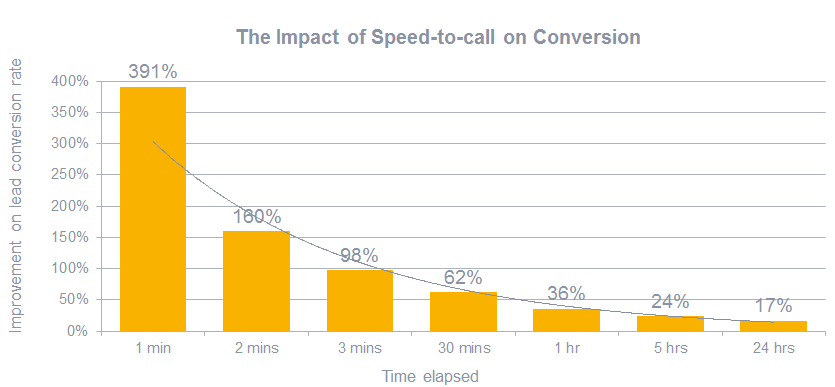
Always respond immediately to sales leads. Research by Lead Response Management found that you are 100x more likely to successfully contact a lead if you respond within 5 minutes and 21x more likely to qualify that lead.
Make 6 attempts to reach leads
How many times do you contact your leads?
Most salespeople call once or twice then give up, but don’t!
Research from Velocify shows that making six attempts is the magic number. You can dramatically improve your contact rates by making six attempts to call your leads!
Call early morning or late afternoon
What time do you call your leads?
A buyer might be in a much better mood with you if you call at a time that is convenient for them, like first thing in the morning or at the end of their working day.
The exact time will vary by industry (don’t forget their time zone), but research shows that the best times to call are usually between 8am and 9am and then again between 4pm and 5pm.

How Science Can Help You Sell More
This is where behavioral science – the study of how the human brain makes choices and which factors influence what we say, how we act, and what we decide to buy – can help. Here’s three science-backed principles that will increase your sales success.
Focus On Losses, Not Gains
Behavioral economists assert that one of the most potent motivators of human behavior is fear of loss. In fact, researchers have shown that people are far more motivated to not lose something than to gain something of equal value at a ratio of 2:1.
So how can you leverage fear of loss in your favor? One way is to clearly communicate to your potential customers they will lose if they don’t invest in your product or service. Too often, sales presentations only focus on gains. Sharing the beneficial outcomes your product or service will deliver is important, there is a mountain of research suggesting that articulating potential losses can sometimes be an even more powerful motivator.
Show What Others Have Done
Think of the last performance you saw that ended with a standing ovation.
As more people around you join in, do you feel the urge to get up and start clapping too?
If you are like most people, you’ll likely find yourself rising to your feet, even though you hadn’t planned to do so.
Why does it feel so difficult to resist that urge?
It’s largely thanks to the well-known principle of social norms. These standards or expectations of behavior are highly influential.
As a result, when you show others how most people in their particular situation act, they will usually follow.
This can be as simple as stating phrases such as, “Many people in your situation…” or “Our most popular option is…”
Also, share surveys, stories, and data that indicate what a lot of people are doing, and you’ll probably find that others will see whatever it is that your company is recommending in a more favorable light.
Never Label Something As “Free”
To gain new customers, you may allow potential customers to your product or service for a short period of time, before they are asked to buy it.
So how can you present this offer in a way that will nudge prospects to say “yes”?
Don’t tell them “it’s free.” Behavioral scientists have found that labeling something as free diminishes its perceived value. Instead, state the monetary worth of what you’re offering and only then give it at no cost.
Ultimately, people will only want to buy things they see as valuable.
For instance, if you want prospective customers to try a subscription to your product inform them that you are so confident that they will love it that you will offer them “three months, which is valued at Rs 120, at no cost.”
This way, the perception of value is Rs 120, whereas, if the request is framed as a “free three-month subscription,” then the value assigned drops to nothing. The more value you can infuse into your offer, the more likely your request will be met with acceptance.
I encourage you to review and apply the three principles I have shared because when you do it will provide the clarity and knowledge you need to better navigate the challenges of the marketplace.

How to Upsell
One way that you can boost your sales is by upselling. Yet, what is the most effective way to create these opportunities? Here are four strategies that will increase the likelihood that prospects will respond favorably to your upselling attempts.
Call on Wednesdays or Thursdays
Next up, let’s take a look at day of the week.
Do you schedule your “calling days” when you have time, or when your buyers’ have time?
The scientific research shows that buyers will be more responsive on some days than others. Unsurprisingly, Monday’s aren’t that great to call buyers, but did you know that Tuesday is just as bad?
The best day to call for you will differ by industry, so make sure you do your research to understand the standard week of your buyers. However, the data shows us that midweek to just before the end of the week is the best day to call.

For most people then, Wednesday and Thursday are the best days to contact your leads.
Call from a Local Number
What number comes up on your buyers’ phone when you call them?
If it’s blocked, a toll number or a long distance number then they are less likely to answer the phone. If you have 10 sales people making calls, then by making them call from local numbers is the equivalent of hiring an extra 6 full time salespeople!
The research by Software Advice shows that buyers are 300% more likely to answer your calls if they recognize your area code.

Smile, and be positive
What are the first words out of your mouth when you start speaking to your buyer?
It’s small talk, or chit-chat, right?
You might think that making a comment about how terrible the weather is makes no difference, but it can actually have a knock-on negative effect on your likelihood to make a sale.
If you had a bad morning, keep it to yourself as scientific research shows that starting with a positive comment will be more profitable for you.
One study from Tipping.org found that waiters who simply said “good morning” to hotel guests and gave a positive weather forecast were able to boost their tips by 27%!
Don’t talk bad about the competition
Do you say bad things about your competitors?
Well, it’s time to stop!
Saying bad things about other people or companies results in a phenomenon called Spontaneous Trait Transference. The brain works in way that associates gossip or negativity to the person who is doing the talking. So if you say something negative about a competitor to a buyer, then their brain puts those negative traits on you!
The science shows that when you say bad things about your competition, those traits are transferred to you in the mind of the buyer.
Remember the power of body language
As a salesperson, I’m sure you think carefully about the words you use, but how much attention do you pay to your body language?
Countless studies have come to the conclusion that effective nonverbal communication is essential for shaping your buyers’ behavior.
One study, presented by Vanessa Van Edwards looked at sales people who had received just a single training session on using their body language to reinforce their verbal messages. The study found that salespeople who use effective body language increased their sales numbers by 56%.
Use Social Media to Sell
Does your boss have a strict “no social media at work” policy?
Well, they shouldn’t!
When used correctly, social mediacan be one of your most effective sales tools.
1. Earn The Right To Attempt to Upsell
Before you attempt to upsell you must first acquire a thorough understanding of your buyer’s perspective and situation.
This may sound straightforward, but it is here that sales people often fail. A recent Forrester Research study found that a shocking 88 percent of the buyers surveyed believed that salespeople do not understand their problems enough to be able to help solve them.
So until your potential customers believe that you understand their problems and objectives, you are not in a position to even attempt to upsell.
2. Gain Acceptance to a Larger Request First
There is some very compelling research from behavioral science that shows you are significantly more likely to gain compliance to an upselling request if you have already gained a commitment to a larger request.
For example, it’s easier to upsell service contracts to potential customers once they have agreed to purchase your software platform.
The reason is because in comparison to the software, which they have already committed to, the service contract is perceived to be a much smaller decision.
This is why the best time to attempt to upsell is right after your buyers have committed to act on a larger, related issue.
3. Lead with Insights
How should you introduce an upselling opportunity? The best way is to leverage your expertise and look for additional problems that the buyer has that you can solve.
Then once you have identified these, provide an insight that will bring it to your buyers’ attention. Offering these insights will also help you gain more trust and position yourself as an expert who can provide real, meaningful value.
Over the years, I have found that potential customers are extremely open to these insights. In fact, often, the issues potential customers think they have is only part of a larger problem. This is why once you begin to look for upselling opportunities; they are relatively easy to spot.
So how should you introduce an upselling opportunity? Here are some introductory phrases that you can use to introduce these insights:
- “Have you ever considered…”
- “Another option you could pursue is…”
- “Something else that a lot of other people in your position consider is…”
- “When most of our clients considered this option, they also looked at…”
4. Get Comfortable Upselling
When you first begin trying to upsell, the number one deterrent will be that it will feel uncomfortable.
The reason is because anytime you try something new it feels uncomfortable.
So what can you do to increase your comfort levels?
There are two things that must happen before you will begin to feel comfortable executing any new sales behavior: Competency and frequency.
Let’s first look at competency.
Learning how to upsell will help you become competent, which will inspire confidence and comfort.
In addition to the strategies I have shared regarding how to upsell, identify a few of your customers’ common concerns.
What are some ways that your product or service can solve these issues?
How are you going to introduce an upselling opportunity?
Once you know the answers to these questions, you can begin to focus on the next phase of becoming comfortable, which is frequency.
Before you can become comfortable upselling you must practice it.
However, there are decades of research studies that have proven that how you practice is just as important as how much you practice. Productive practice should never involve potential customers.
Instead, it should be done in a context that allows you to fail, receive feedback and learn.
This is why before you ever attempt to upsell with actual prospects, you should first practice.
You can practice with a co-worker, spouse, significant others, the mirror or even record yourself and listen to it.
Regardless of how you practice, be sure to do so in a way that allows you to make mistakes and learn from them.
Then once you have practiced, received feedback and adapted based on the feedback you’ve received, you will find that you will begin to feel more comfortable.
For example, when you first started driving, remember how uncomfortable that felt?
It was only after you learned what to do and practiced doing it that you became comfortable. The same is true with any new sales behavior, such as upselling.
One final thought on upselling. Why should you do it?
The reason isn’t just to grow your sales or improve your income.
The reason to upsell is to deliver more value to your potential customers.
This is why those sales people who become skilled at upselling are almost always the same sales people who have the highest customer satisfaction ratings.
In other words, upselling is something you do for others, not to them.
A recent study by social sales expert Jim Keenan found that 78.6% of salespeople using social media to sell out performed those who weren’t using social media.
And sales reps that use social selling are more likely to reach their quota, renewal rate and forecasting accuracy.
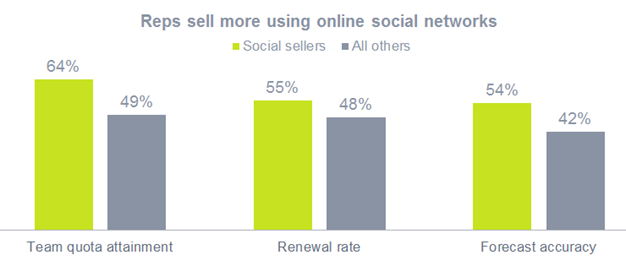
As for the most valuable social media network to salespeople, it’s (unsurprisingly) LinkedIn.
A study published by the Harvard Business Review found that 40% of sales people that regularly use LinkedIn can attribute revenue to their use of the social network.
Be a “Driver”
Do you come across as passionate to your buyers?
The science identified people with a personality type known as “drivers” that conveyed an overwhelming desire to succeed.
They’re competitive, optimistic, and ambitious!
Anyone can work on these skills, but if you’re hiring new salespeople then you’ll want to make sure these qualities are already present.
One study looked at 80 years of sales research and discovered that the top salespeople exhibit the traits of “drivers”.
In contrast, under performing salespeople “can cost over six figures annually in salary, training dollars and lost sales” to employers.
Enjoy the competitive nature of sales
Do you want to ‘win’ as many sales as possible?
The top performing salespeople are competitive and see sales as not just a job, but as a game. That’s why they use the term ‘winning’ a sale.
A study by marketing professor Balaji Krishnan and his colleagues tested 182 salespeople and found that competitiveness caused salespeople to work harder and outperform their peers.
Say Yes to Optimism
When you look at a glass, is it half empty or half full?
You might be wondering what the answer to this question can have on sales, but the science is clear.
Psychologist Martin Seligman and his colleagues were the first to study optimism in salespeople.
Over 30 years of research involving more than a million salespeople confirms that optimism is a valuable attribute.
Their most notable research was in 1986 when Martin Seligman and Peter Schulman tested 14,000 applicants at Metropolitan Life for optimism.
The results showed that optimists consistently outsold pessimists.
This wasn’t a one-off, either as they were able to repeat the results in an 1995 study involving salespeople across several industries, including office products, real estate, banking, and car sales.
They found conclusively that optimists outsold pessimists by between 20 to 40%.
Introvert? Extrovert? Be an Ambivert
If you’re an introvert, you may have heard that extroverts make the best sales people.
Well, it’s not entirely accurate as the best sales people are neither introverted nor extroverted. They are in fact ambiverts.
What is an ambivert?
An ambivert is someone who has both introvert and extrovert qualities, and bounces between the two without committing to one or the other.
For example, an ambivert enjoys being around others, but they also enjoy their alone time.
Sound familiar? If so, then you’re in luck.
A recent study of 300 sales professionals published in Psychological Science shared researcher Adam Grant’s findings that qualities of both introverted and extroverted personalities have their place in sales, but the key take away from the study saw that on average, ambiverted sales people generated 32% more revenue than highly extroverted sales people!

Be a Closer, Consultant, or Expert
Everyone has their own approach to sales, but what is yours?
Scientific studies have identified eight main sales approach categories, including storytellers, focusers, narrators, aggressors, and socializers.
However, a study of 800 salespeople by researchers Lynette Ryals and Iain Davies found that the remaining three were the most successful – Closers, Consultants and Experts.

Laugh Your Way to More Sales
A funny sales person can never be forgotten with a seemingly endless supply of sarcastic remarks.
Though the attempts at humor continue, prospects become annoyed and then attempt to disengage from the sale.
In the end ineffective use of humor can loose sales.
Many sales people struggle to use humor in ways that enhance their ability to sell.
There is no doubt that when used effectively, humor is a valuable sales tool.
However, there is also compelling evidence that when clumsily deployed, humor will hinder the sale from occurring.
The good news is that there have been many social science studies that have analyzed how humor can be used to positively change behavior.
This research discloses how sales people can strategically use humor to improve sales effectiveness.
What’s more, the research also reveals how not to use humor within the sale.
Using Humor To Sell More
When sales people use humor effectively it will enable them to more easily accomplish the following three productive sales outcomes.
1. Build Rapport
Humor boosts feelings of likeability, which naturally increases rapport.
There is a mountain of scientific research that has confirmed that people are far more likely to act on a request from someone they like, than a person they do not.
Likewise, prospects will rarely buy from sales people whom they dislike.
Likeability means that you enjoy being in a relationship with another person. When prospects do not like being around a sales person, they will interpret the sales person and the sales person’s product or service in a negative light.
2. Inspire Smiles
Humor induces smiles, which have been proven to make one more receptive to a persuasive appeal.
For example, scientists have conducted numerous studies exploring how smiling impacts the brain.
The research shows that when a person smiles it puts him or her in a more optimistic, energetic and productive emotional state.
These positive emotions linger, even after the act of smiling has ceased.
In addition, smiling alters the brain. Science has proven that when facial muscles contort to produce a smile, blood flow increases to the brain.
This causes the brain’s temperature to decrease, which triggers feelings of pleasure.
3. Improve Sales Results
Humor can help sales people raise their average sale price. For instance, at the close prospects are often tense.
This tension can warp prospects’ perspectives and hinder the sale.
A well-timed humorous comment can reduce this tension and put prospects in a more positive mindset.
A great example of this is found in the research of social scientists O’Quin and Aronoff.
These researchers found if the seller stated the humorous quip, “I will throw in my pet frog” when disclosing price, the average sale price rose.
How Not To Use Humor
Though humor can amplify sales success, as stated earlier, it must be used strategically.
Research has shown that there are certain ways that sales people should avoid using humor.
1. When Presenting Key Value Propositions
Research has confirmed that humor disrupts critical thinking and distracts one from the message of a persuasive argument.
This is why sales people should refrain from using humor when presenting key value propositions that prospects must contemplate and commit to.
2. Use Self-Deprecating Humor Sparingly
Scientists have studied the effects of self-deprecating humor.
The studies confirm that when people use self-deprecating humor it increases likeability and social attractiveness.
However, there is also strong evidence that has identified that self-disparaging humor decreases the perception of competence.
Sales people should only use self-deprecating humor if their prospects already believe they are an expert.
In this context, self-disparaging humor will cause a sales person to be perceived as genuine.
Until a sales person is perceived as an authority, using self-deprecating humor will be counterproductive, since it will erode trust.
3. Refrain From Sarcasm and Potentially Offensive Humor
Humor should never reveal a sales person to be anything other than an expert who is enjoyable to be around.
Most sales people already know that they should act professionally, avoid sarcasm and any offensive humor.
Yet, others still need to be reminded.
When sales people fail in this area it is usually because they evaluate humorous remarks through the criteria of if it is offensive to them.
Yet, such thinking is dangerously shallow. Sales people must always think of the sale from their prospects’ viewpoints.
As a general rule, if humor could potentially offend or annoy prospects, sales people should abstain from using it.
Selling is relational. The necessity of relational influence is the very reason why sales people are needed.
This is also why humor matters. When used strategically, it will boost prospects’ receptiveness to the sales person and the sales person’s product or service.

How To Create A Sales Incentive Plan
If you are a sales or business leader how can you create a sales compensation plan that will improve sales results? Here are four rules that will help guide you in devising highly effective pay plans.
Drive Desired Sales Behaviors
Every great pay plan is built on the idea that compensation drives behavior.
So the first step in forming an effective compensation plan is to identify the specific behaviors you want your sales people to engage in.
How can you do this? You start with the strategic business objectives of your organization and then build a pay plan that rewards sales people for executing the behaviors that accomplish those objectives.
Far too often management blindly constructs pay plans that incentivize sales people to sell against the goals of the company.
They pay them to focus on the wrong customers, products and activities.
To make sure that this does not happen to you, ask yourself:
Are all of your customers of equal value?
Does your compensation reflect the profit and growth objectives of your organization?
Then once you know exactly what you want your sales team to accomplish, align your pay plan with these goals.
Focus On Generating Revenue, Not Saving Money
Too often I see compensation plans that are more focused on saving money than generating revenue.
These inept compensation plans actually de-motivate sales people and decrease sales.
For instance, in an effort to save money one company required sales people to give up 50% of their commission if they received any help from their sales manager.
This is in spite of the fact that the data showed that when sales people did receive assistance from their sales manager, closing rates nearly doubled.
Understandable and Transparent incentives Attracts and Retains Top Performers
What kind of sales people do you want on your sales team? Does your compensation plan help you attract and retain those individuals? Your pay plan should help you create your ideal sales team. Make no mistake, top performers will rarely subject themselves to weak compensation plans, so create a plan that rewards heightened levels of performance.

How To Sell With Integrity
There is no doubt that integrity matters in business and sales. To become a successful sales person, you must be trustworthy, honest and dependable. In today’s transparent marketplace, salespeople who will do or say anything to earn a sale are a liability that is simply bad for business.
The study found that experts were naturally gifted in all areas of selling, while consultants tended to focus on listening to their buyers and solving problems, while closers were smooth-talkers in converting the biggest leads.
What they found was that only 37% of salespeople were deemed effective in the long run and these three types of salespeople – closers, consultants, and experts – were among the most successful.
Act like your buyers
Do you notice how your buyers behave and respond to you?
The science shows that mirroring the gestures, expressions and posture of someone you are speaking to can significantly increase their perception of you.
This technique, known as mirroring, is mostly seen in couples, but it happens in the workplace too – at meetings, conversations with colleagues and networking events.
One study in 2009 involved a study of 60 people who were tasked with negotiating with each other. By mirroring their partner’s speech and posture, they were able to reach an agreement 67% of the time, while those that did not mirror their partner were only able to reach an agreement 12.5% of the time.
Another study in 2011 involved over 100 customers and discovered that they bought more products and had a more positive impression of the company when the retail salespeople were told to mirror the behavior of their customers.
Mirroring the verbal and nonverbal behavior of your buyers will significantly boost their willingness to agree with you.
Believe in Yourself
Do you ever doubt your abilities?
Everyone does it from time to time, no matter how successful they are or whether they are male or female.
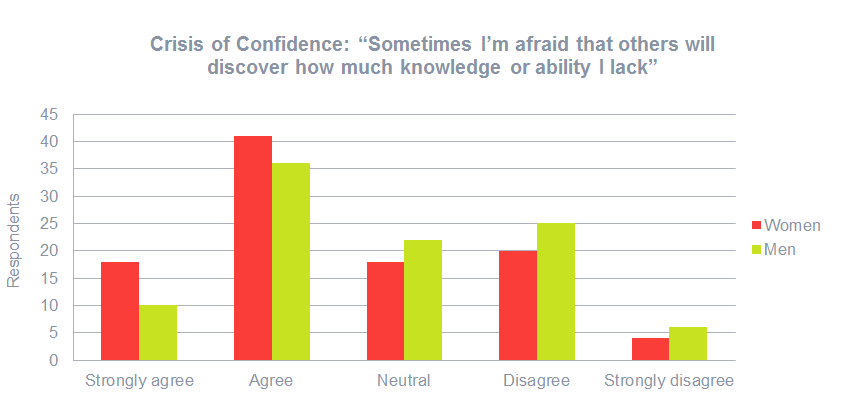
In fact, doubting yourself and your abilities is such a common issue that psychologists have given it a name: impostor syndrome.
One of the best ways to boost self-confidence, according to research, is to reflect on how you’ve succeeded in the past. Then, say out loud to yourself that the successes you have earned in the past are evidence of how well you will perform in the future. It’s a simple exercise, but it has been proven to shift your mind into being more confident and self-assuring.
Avoiding imposter syndrome can improve your performance and charisma.
Smile more (a lot more)
Do buyers find you warm and approachable?
If not, there’s a very easy way to improve this. Just smile at them more.
There have been a number of studies that show how smiling is closely linked to our perception of how approachable someone is. Dr. Robert Zajonic analyzed what happens to the body when you smile, which includes increased blood flow to the brain and the lowering the body’s temperature. These result in feelings of pleasure and increased confidence.
Best of all, when you smile at someone, it activates the brain of the person you are smiling at, And so they are more likely to smile back at you.
Smiling makes you come across as warmer and research has shown that when people perceive you as warm, they’re more likely to trust you and embrace your ideas.
Salespeople who ask insightful questions to their buyers create a more enjoyable buying experience, which helps increase sales.
Nobel Prize winner awarded to George Akerlof explains, “Dishonest dealings tend to drive honest dealings out of the market. The cost of dishonesty, therefore, lies not only in the amount by which the purchaser is cheated; the cost also must include the loss incurred from driving legitimate business out of existence.
The following are the percentage of those surveyed who rated each group as having high levels of integrity:
- Nurses 83%
- Medical Doctors 61%
- Pharmacists 68%
- College Teachers 59%
- Police Officers 59%
- Clergy 56%
- Journalists 25%
- Business Executives 18%
- Lawyers 16%
- Insurance sales person 12%
- Car salesman 7%
The reality is that selling with integrity is the only way to sell because it will enable you to both sell more and have no regrets about the sales you make.
For example, one sales person’s don’t list may include:
- I will not lie
- I will not exaggerate or distort the truth in any way
- I will not cover up a mistake, but will own it and make it right
- I will not steal time from my employer
- I will not compromise what I believe to be right, regardless of the circumstances
Nothing to fake in sales…
A 22-year-old Sikh chaat seller from Mohali near Chandigarh dresses up in a business suit every day and sells street food. He along and his brother sell all kinds of delicacies ranging from golgappa to aloo tikki.
 Youtube
Youtube
Youtuber and food blogger named Harry Uppal recently visited this chaat stall and talked to the young man about his shop and what makes his food unique and different.
He said how he has been working quite hard for a few months and started this stall with his money.
Tail Piece:
Every time life tries to pull a salesman down, he works 10 times harder to come out strong and tall. This way he wins a world crowded with negatives, he is glad that it could be a source of strength and inspiration for so many people. He feel better knowing that he has done it all alone and no regrets in life.”
Top most festival Products FMCG consumers search today
World Wide Festive Trends Decoded What Indian festive consumers seek...
Read MoreHow right selection of FMCG Salesmen improves brand market share
How can FMCG Companies improve salesman’s technique in order to...
Read MoreHow most searched Fmcg sales and marketing words help newbie salesman
Why undestand FMCG sales management? Sales management is the process...
Read MoreHow Successful FMCG Salesman Starts his Day, a guide
How does one become a good sales executive in the...
Read More


